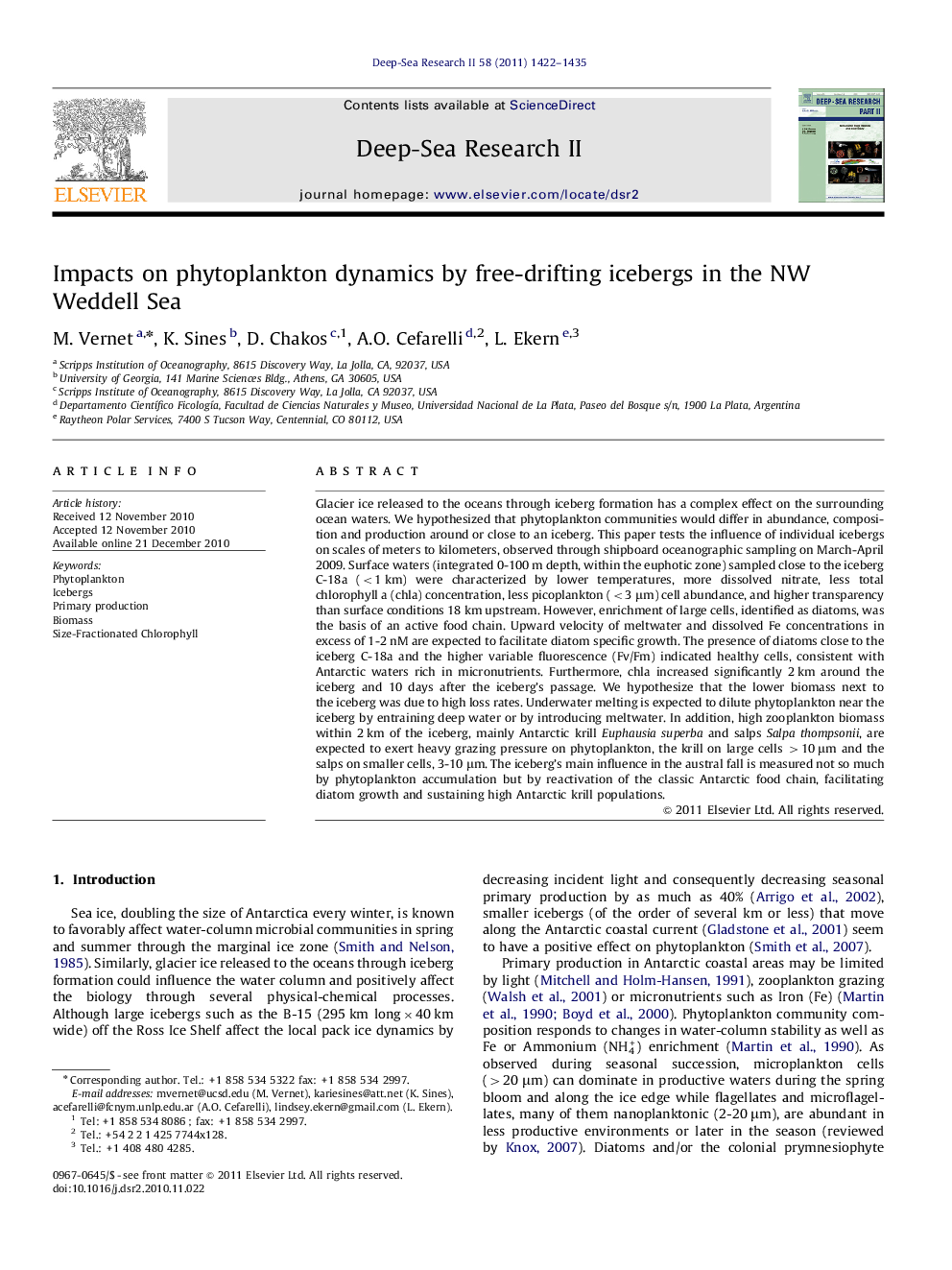| کد مقاله | کد نشریه | سال انتشار | مقاله انگلیسی | نسخه تمام متن |
|---|---|---|---|---|
| 4536875 | 1626465 | 2011 | 14 صفحه PDF | دانلود رایگان |

Glacier ice released to the oceans through iceberg formation has a complex effect on the surrounding ocean waters. We hypothesized that phytoplankton communities would differ in abundance, composition and production around or close to an iceberg. This paper tests the influence of individual icebergs on scales of meters to kilometers, observed through shipboard oceanographic sampling on March-April 2009. Surface waters (integrated 0-100 m depth, within the euphotic zone) sampled close to the iceberg C-18a (<1 km) were characterized by lower temperatures, more dissolved nitrate, less total chlorophyll a (chla) concentration, less picoplankton (<3 μm) cell abundance, and higher transparency than surface conditions 18 km upstream. However, enrichment of large cells, identified as diatoms, was the basis of an active food chain. Upward velocity of meltwater and dissolved Fe concentrations in excess of 1-2 nM are expected to facilitate diatom specific growth. The presence of diatoms close to the iceberg C-18a and the higher variable fluorescence (Fv/Fm) indicated healthy cells, consistent with Antarctic waters rich in micronutrients. Furthermore, chla increased significantly 2 km around the iceberg and 10 days after the iceberg’s passage. We hypothesize that the lower biomass next to the iceberg was due to high loss rates. Underwater melting is expected to dilute phytoplankton near the iceberg by entraining deep water or by introducing meltwater. In addition, high zooplankton biomass within 2 km of the iceberg, mainly Antarctic krill Euphausia superba and salps Salpa thompsonii, are expected to exert heavy grazing pressure on phytoplankton, the krill on large cells >10 μm and the salps on smaller cells, 3-10 μm. The iceberg's main influence in the austral fall is measured not so much by phytoplankton accumulation but by reactivation of the classic Antarctic food chain, facilitating diatom growth and sustaining high Antarctic krill populations.
Journal: Deep Sea Research Part II: Topical Studies in Oceanography - Volume 58, Issues 11–12, June 2011, Pages 1422–1435